drag badge here
wndwlss
gamer level 4
1512 xp
1512 xp
followers
4
4
Use my invite URL to register (this will give me kudos)
https://boardgaming.com/register/?invited_by=wndwlss
profile badges




recent achievements

Gamer - Level 4
Earn Gamer XP to level up!
Earn Gamer XP to level up!

Supporter
Give 10 hearts (loyalty points) to a single game
Give 10 hearts (loyalty points) to a single game

Amateur Reviewer
Review 3 games and receive a total of 40 positive review ratings.
Review 3 games and receive a total of 40 positive review ratings.

My First Game Tip
Submit a game tip, strategy, or house rule.
Submit a game tip, strategy, or house rule.

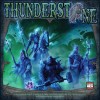


















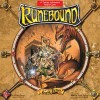

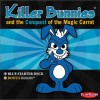


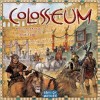


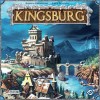






Colosseum
In the world of Colosseum you are put in the world of ancient Rome tasked with the daunting job of running a show potentially for various senators, or perhaps even the emperor himself.
Right out of the gate the game has an impressive layout. Each player starts with their own Coliseum some basic actors props and set pieces, and two shows that they can perform to amuse the masses. The pieces do an excellent job of keeping with the theme of the game. You then have 5 rounds to attempt to use your earnings from your previous shows to attempt to purchase even bigger and better shows, more actors, and set pieces, and try your best to impress all who attend.
The game is played in several phases, allowing each player to feel involved and keeping the pace going throughout the game. First players are able to invest in their coliseum. They have the ability to gain an additional die to move the spectators around the board, add additional seats to obtain additional victory points, or even add additional sections to their coliseum so that you have more room for bigger shows. You also have the option to buy more shows at this stage. There is a list of 30 different shows, requiring different size coliseums and more actors/animals/props ect.
After each player makes no more than 1 upgrade, (unless special tiles are played), each player can obtain asset tokens. This is done through an auction system. This means that if you have the money and you absolutely need those two priests to put on your next show, you can outbid your opponents and take it from them.
Once each player has had a chance to acquire their group of 3 different tiles, they are given time to trade assets. There are no hard and fast rules here, so you can trade just about anything and this can become hectic. Still this can become a very fun part of the game.
Now it is time to put on your show. Each player declares the show they are putting on, scoring more points for the more complete the show they can put on. For example if you are missing one tile for a show you will score one fewer point, and if you are missing 3 it could be 3 less. You also gain points for any nobles who attend your show, for any bonuses on your coliseum and for any previous shows you have put on.
Afterwards a reward is given to the player who earned the most victory points in their current show, and the player who scored the lease can take one tile from the winner to use on their next show. All players then need to remove one tile from the show they performed.
From top to bottom this is a game that I totally enjoy. With only 5 phases in 5 rounds the game has a set limit which does not make it a huge time investment (although it can run up to 90 mins), Some gamers dislike the mechanic where the player who is last gets to take from the player who is first, but there is still a great deal of thought and balance in this game.
I have taught it to several friends, many who are experienced gamers, and some who are new and after a round or two they were in it without any difficulty, although with all of the phases I would not recommend this game for little ones. In the end this is a great game, and you will not regret getting or playing it!